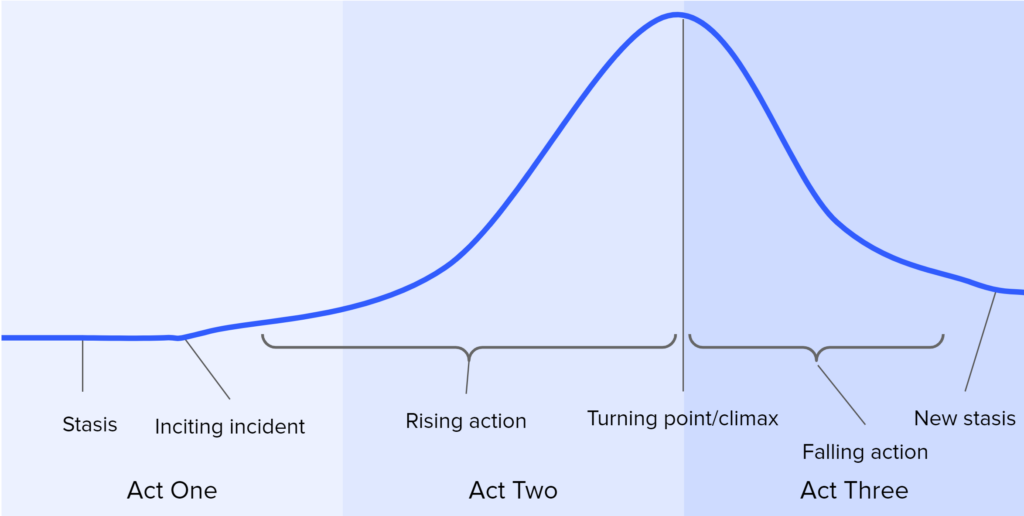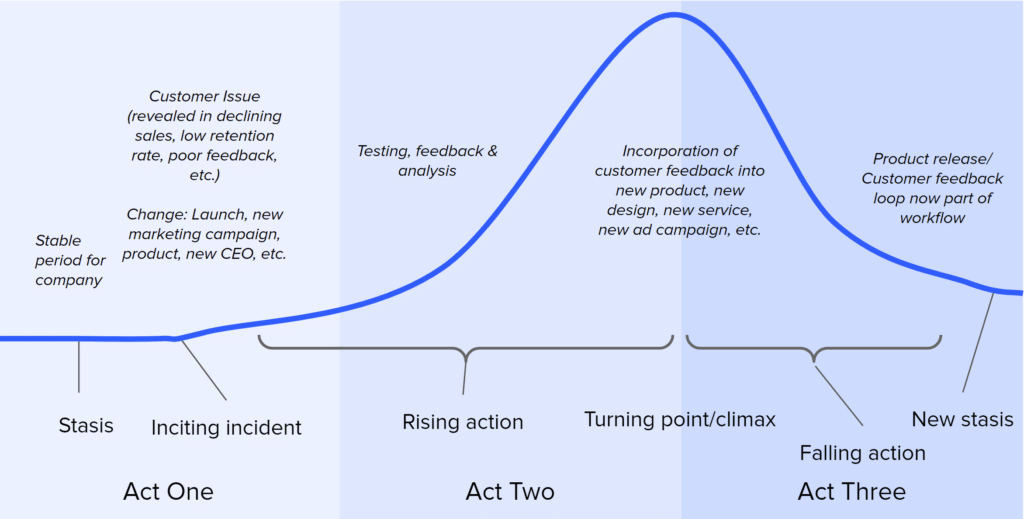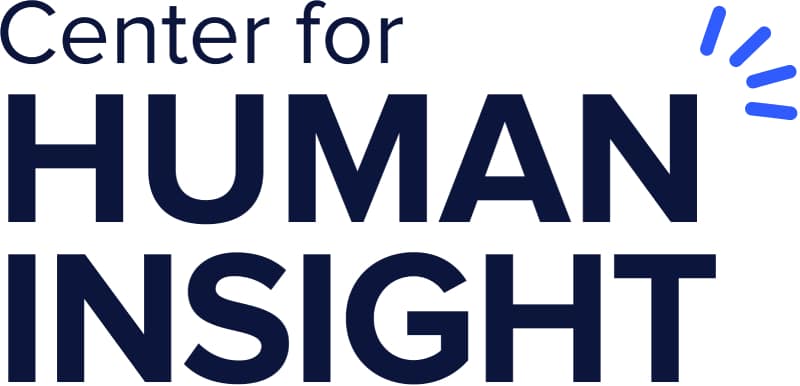Table of contents
Editor’s note: Storytelling is a common theme we hear from people in human insight roles. Simon Mateljan told us customer storytelling is a critical skill for designers (link), and Eric Kimberlin said product storytelling is essential to a product manager (link). Even industry advisor Forrester Research recently told its clients to “pair data with human impact stories for a successful business case.”
Human insight videos are a fantastic part of that storytelling because they bring customer feelings to life. Unfortunately, there’s a lot more agreement on the importance of business storytelling than there is information on how to actually do it. In this article, Rachel Blackburn, a content manager in UserTesting’s customer education team and expert storyteller, teaches you how to structure your business stories so they are as gripping as the latest Marvel movie.
What if I told you that you’d be writing the script for the next Marvel Universe comic book-movie adaptation? Perhaps the next chapter in the She-Hulk story, or the next installment of Guardians of the Galaxy?
It’s a bit intimidating, right? I would certainly feel that way. But breathe easy friend, because I’m not going to ask you for the next Marvel movie script. I just want you to tell me your story about the latest user research you conducted in order to help a customer. What user experience did you test? Maybe you asked testers to look over the prototype for a new app, or perhaps you have tested out an ad for a new marketing campaign—how did it go? How did your work ultimately land with your customers?
Now: what if I told you that the story of your user research actually follows the same story structure as the latest Marvel movie? In fact, the majority of Hollywood movies and other Western storytelling (television, novels, etc.) you may have encountered recently follow this same structure. This opens up an incredible opportunity for you, which is this: the next time you have to report the results of your user research to stakeholders, you can use Hollywood-style storytelling to clearly communicate the results of your testing, and excite your stakeholders about incorporating customer feedback loops into your organization’s workflow.
What is this storytelling structure, and how can you apply it to your user research?
The three acts of storytelling
This structure, sometimes called a three-act story or Aristotelian plot structure, goes all the way back to philosopher Aristotle in 5th century BCE Greece, where he wrote that all stories should have a beginning, middle, and an end (or, what became acts one, two, and three). While this might sound somewhat obvious to us here in 2023 CE, this structure becomes more nuanced as you dig in more deeply, helping to illuminate the cause-and-effect, tug-of-war that propels stories forward, creating an emotional investment on the part of the viewer. This structure is outlined in the following image:

To illustrate how this structure works in personal storytelling, I’ll borrow from a chapter in my own life, “How I Decided to Leave My Job and Go for a Master’s Degree,” to demonstrate how each key point propels the story to its next major plot point. After we move through this structure together, I’ll demonstrate how the story of user research can adopt this same pattern, ensuring that your next presentation will grab your audience and keep them engaged.
Act I, or Our Marvel Heroine’s Origins
Beginning in Act 1 at the very start, we are often introduced to the “stasis,” or the equilibrium state of the lives of our characters. For me, this meant I was working at an engineering firm outside of Toronto, and generally enjoying my life and work. In many superhero origin stories, this is the life of a superhero before they discover their special powers. What happens next, however, is we get an “inciting incident”–something unusual happens, or a conflict or issue is revealed that sparks the story and sets a series of events in motion that will lead our main character to a different chapter of their life. This is the moment that the spider bites Peter Parker, giving him newfound powers and beginning his alter-ego, Spiderman.
For me, the inciting incident was that I was at work, washing dishes in our office kitchen when Tony, an engineer, came to get some coffee. In our brief chit-chat, he told me that I was doing great work, especially when it came to keeping the refrigerator stocked with fresh milk. If it wasn’t for me, Tony would never have fresh milk for his coffee! Tony was sincere and I appreciated the compliment, but a voice spoke in my head: is this what my life has come to? I keep a fridge well-stocked? Surely I can do more with my life, can’t I? In short: Tony’s praise became the inciting incident that caused me to consider leaving my employer and beginning a graduate school program.
Act II, or the Heroine Readies for her Big Fight Scene
This brings us to Act 2, or the middle of the story. It is here that we see what’s called “rising action,” which builds throughout the second act, reinforcing the budding feelings and actions of our heroine. It is when Wonder Woman begins searching for the God of War to stop World War I, and all of her actions now center on this pursuit. For me, this was researching graduate school programs, so pretty much the same thing as Wonder Woman (and yes, I know she is part of the DC comic book Universe, not Marvel). Often in Hollywood films, this is the ramp-up to a couple coming together, the final round of a big competition, a major battle to be fought, etc. This huge event which springs from the rising action is the climax, or “turning point,” in which we see the battle finally take place, or the wedding, or the team you’re rooting for win the big prize, etc. The climax is a decisive action that culminates everything which has led to this moment.
In my own story, this was my interview for the MFA program I would eventually attend. In that interview, I finally felt grounded in my decision, and any lingering doubts were erased. I decided with certainty to give up my life in Toronto and move back to the U.S., a big turning point in my life. In the first Black Panther film, it is when T’Challa returns and begins his big fight with Killmonger, which will change the course of Wakanda going forward.
Act III, or Heroine’s Aftermath
The grand finale – Act 3 – occurs after the “falling action” resulting from the turning point has completed. We are now on the other side of that climax, and finding a new balance, or a new equilibrium, in the aftermath. The dust is settling after the events of the big turning point; which for me, meant that I found myself driving down to the U.S. with all my belongings in my little Honda Fit to begin school as a graduate student. The falling action constitutes all of the events that help our superhero transition from the turning point to a new equilibrium, or the “new stasis,” wherein I now found myself living out a whole new life in Virginia. The End.
The same pattern then starts all over again, taking us through to the next big change in our lives, or the next chapter. The new stasis becomes the beginning stasis of our next chapter. Just to note however: if you are reading my examples and thinking, “No way, the turning point for The Black Panther is when Killmonger reveals his identity as the Queen’s nephew,” you’re not wrong. That’s one of many joys in the art of storytelling – you decide as the storyteller how you believe one event leads to the next, and which key moments to highlight, as you assess the ups and downs of your story flow. In fact, it can easily be argued that even the Marvel cinematic universe does not always adhere strictly to the Aristotelian story structure; but my goal here is only to help you tell a great story about user research, and not to argue the finer points of Marvel movie-making. (For that, I’ll have to publish on the Marvel Center for Movie Insight, I suppose.)
How to apply the three acts to your user story
So how do all of these moments overlap with the story of your customer, and your user research? Let’s take a look. Here is the same image from earlier, except that I have overlapped the major plot points of a user research journey on top of our basic plot structure:

Act I, or Discovering Your Customer’s Needs
Starting in Act 1, this period of stasis is for the company as a whole. The company is going along, doing what it does, and everything seems fine for the moment. So what might the inciting incident be? The inciting incident for an organization might well be asking your customer, “What do you need from us that we aren’t delivering?” Or there will be a need to address an issue for your customers, such as declining sales, poor reviews of the product, or declining retention. Perhaps this is a discovery interview with a customer who creates a light bulb in your head about your product or service. In the case of Spreadgroup, a leading European made-to-order printing business, the inciting incident was their decision to engage US customers (see here for the full story of their research with UserTesting). Whatever the inciting incident may be, this is where user research really steps in, beginning the second act of your story – and as your research progresses and your customers tell you what they need, so does your rising action rise.
Act II, or Qualitative Feedback
The rising action in this story is each round of user research and analysis, and how it gets you closer to the new direction that will better solve your customer’s problem, whether that answer was a new design, a new website, a new service model, a new marketing campaign, etc. This part of the story may spread out over a long period of time. In Spreadgroup’s first year with UserTesting, they ran 36 tests. By the following year, it was over 70. What are the highlights from your most significant tests? What were the small insights that propelled your testing forward into bigger and bigger insights around your customers’ needs? These answers are how you will build your rising action, and they are likely to be found in the analysis you undertake from your testing results.
The turning point of your user research story will be the outcome of your testing and your related recommendation for the next major move, based on your analysis of the results. It will be a new day that divides the customer’s story with your company into before and after this turning point. In the case of Spreadgroup, an example of this moment came when, after much testing, they decided to launch a new feature for their website, which enabled customers to print stickers directly from their site–saving customers time and money. This decision brought Spreadgroup increased sales, increased web traffic, and increased conversions.
Act III, or The Customer’s Big Win
The fallout of declaring your customer solution at the turning point becomes the falling action, and the beginning of your third act. The falling action is the process of implementing the change you recommended based on your user testing. For example, if you concluded after user testing that your brick and mortar store needed to begin offering a curbside delivery service in order to better meet the needs of customers, the falling action would be the various teams in your company collaborating in order to create this curbside delivery service and begin the implementation process. Once this new workflow is in place, your customers will now be at a new stasis, with the curbside delivery service integrated into the company’s overall workflow. Spreadgroup entered a new stasis in which they do 20% more sales in organic products than ever before.
Many researchers, when conveying their recommendations to stakeholders, often do not spend enough time in Act III. Take the time to communicate how the ROI from this testing makes everything better–not just for the company, but particularly for the customer. Where would they all be without the insights you generated? If you don’t take the time to communicate the value of your research, how will anyone know to support it?
Speaking broadly, consider your customer as the main character, and that collecting user feedback drives your story flow to careen over the ups and downs of rising and falling action, engaging your stakeholders. Telling your user research story well is not just delivering the message clearly, it is also moving listeners to action and support of your recommendations which in turn, benefit your customers. A good story helps stakeholders visualize why your recommendations are on solid footing, and establishes your credibility as the messenger.
How to structure your story
Finally, what can you do to really engage your audience in the delivery of your story? Aristotle also defined his seven elements of a story, and by thinking through each element and how you want to highlight what’s key for your customers in the research, your delivery becomes a matter of letting your empathy and creativity fly, while grounded in a clear and concise structure.
Here are the seven story elements below, complete with instructions on how to use each one:
- Plot. First things first, align your story with the plot points discussed above: What were your inciting incident and turning point? What did stasis look like before collecting feedback, and how has it changed in your new stasis? When thinking through your rising action and falling action, imagine the cause and effect as the ebb and flow of your narrative. Your plot structure comes down to clearly outlining the problem to be solved, and then compelling your audience to stay to the end of the movie to find out how you solved it–thereby, saving your customers.
- Characters. While your main character will be your customer (or perhaps a buyer persona), who else is involved in this story that might add some color? Think about other customers and test contributors, but also your stakeholders, your UX/UI designers, user researchers, etc.–get your audience to invest in at least 2-3 characters they can root for.
- Setting. Where does this story take place? Does it begin in the home of your main character, the customer? Does it begin in a user research meeting among colleagues discussing how to solve the main problem? How can you emphasize different settings to take your audience on a journey that roots them in your narrative with you?
- Conflict. What is the conflict between what a customer needs or wants from your organization, and what has been delivered to them previously? What else stood in your way before resolving this conflict–such as limited time to solve the problem, or limited resources? How can you explore this problem to engage your audience’s desire to see the conflict resolved? We don’t watch a Marvel hero to see them surmount the obstacle of crossing the street; we watch the Marvel hero to see them climb a mountain. Show us the mountain that you overcame.
- Themes. These might be key questions and responses that keep showing up among your customers’ feedback. What are the key insights that you discovered, and how do they weave throughout your story, driving a common thread? Identify one or two themes, such as customer problems, insights, or how empathy drove you to resolve these problems, as the guiding principles that led you to discover the solutions.
- Spectacle. What stands out in this story that you wish you could bring to life? In other words, if you were filming your movie, what would you reserve your biggest budget line item for? What can you show off about this story? A fantastic tool for spectacle is the highlight reel of your customer insights. A highlight reel IS the movie of user research, and it will allow your stakeholders to emotionally engage with your customers. Spend some time choosing key clips of insightful customers that will help tell your story.
- Style. Lastly…who are you? What interests YOU about this story, and why? Are there any images or words of special meaning that could help tell this story? Drive and highlight what is meaningful and special about the story to you, so that you can share it with everyone else.
Empathy is your superpower
And here is the thing: you are likely to be great at telling stories, because good storytelling and user research have one big thing in common–they are built upon our empathy, and our desire to understand others. Empathy is your superpower. You will achieve buy-in from stakeholders when your storytelling enables them to exercise their empathy, and place themselves in your customers’ shoes. Enjoy the process, and everyone will enjoy it with you.
Superhero illustration by Dall-e 2.
The opinions expressed in this publication are those of the authors. They do not necessarily reflect the opinions or views of UserTesting or its affiliates.








